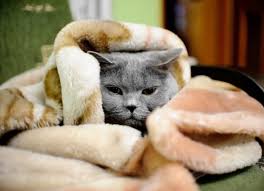animal control lahore, Best Pet clinic in Faisal town, Pet care, pet clinic
Home Remedies for Cat Cold
In winter, cats are prone to catch colds just like humans. Feline cold is characterized by upper respiratory infections that can be viral or bacterial. Humans are less likely to catch it but it is highly contagious between cats.
Symptoms of cat cold include:
- Watery eyes
- Stuffy nose with discharge
- Mild fever
- Sneezing and sniffling
- Poor appetite
- Coughing (in rare cases)
Cats that are unvaccinated and seniors or infants need more attention than others. If symptoms persist they may lead to pneumonia, breathing diseases and organ damage.
Doing steam therapy
A steamy environment can help relieve the cat’s nostrils and is an effective way to moisten the nasal passage. You can do this by:
- Using a humidifier
You can place a humidifier in a room your cat spends most time in. Adding a few drops of essential oils like lavender oil may also help.
- Using a bowl
Place your cat near a bowl with hot water. Then place a towel over both. Make sure the water is not too hot as the cat might get tongue burns if it tries to drink it.
- Exposing the cat to a steamy bathroom
When showering, you may take your cat inside. The steam from the hot water will also relieve stress and nasal congestion.
It is also wise to give your cat a cozy area with warm blankets.
Cleaning the cat’s face with a washcloth
Sick cats are often lethargic when it comes to grooming themselves. The area under their eyes can be watery and the snot on the nose can become crusty and dry.
You can clean your kitty by using a damp washcloth/towel and gently wiping away any discharge on the face. Make sure you use separate washcloths for the eyes and nose to prevent bacteria from spreading. Also avoid rubbing harshly as this can cause skin irritation.
You may also brush the cat yourself, and look for any discharge on the forearms and paws as the cats use these body parts to clean their nose.
Using Saline Solution for the Nose
Saline solution contains sodium chloride and water. For a cat with cold it helps open the nasal passage.
To do so, simply take a cotton bud, dipping it in the solution and inserting it in the opening of the cat’s nose. Inserting the cotton bud too deep in the nose is dangerous so this should be done with care. The cat might also sneeze upon insertion and this is a good way to clear out the nose.
There are many medicated options for saline spray but you can make saline solution yourself as well by adding a pinch of salt to half a cup of plain warm water.
Distancing other pets in the House
It is important to keep other cats or dogs in separate areas of the house, away from the sick cat. Colds usually last between a week or two and are highly contagious during the incubation period which is 2-10 days.
Making changes to Food
A great loss of appetite will be seen in a cat with cold or flu. This is primarily due to them losing their sense of taste and smell.
Some alterations to make in the food are:
- giving warmer food to help with cold
- giving wet food or adding water to food so it is easily digestable
- feeding cat food with a stronger scent eg. tuna
Using Natural Ingredients
Honey – adding ½ teaspoons of honey two times a day is advised.
Apple cider vinegar – ½ teaspoon mixed with wet food or chicken soup everyday
L-lysine – 100mg twice a day
Vitamin C – 1000mg should be given twice everyday
Avoid using any other cream,fluid or ointment on the cats eyes or nose if it is not prescribed by your vet. Human medicines and antibiotics should also be strictly avoided. If symptoms worsen, you should book an appointment immediately.

